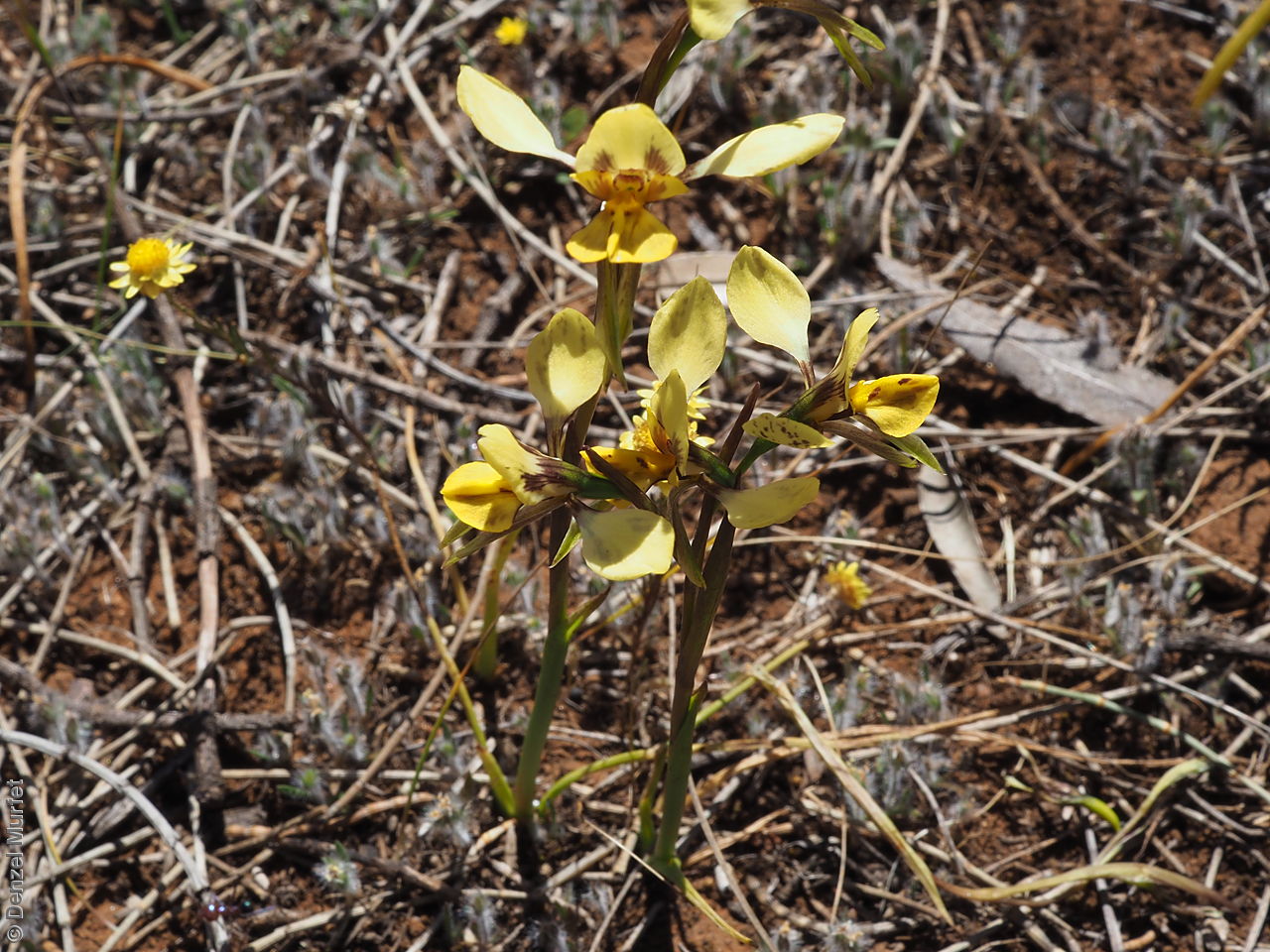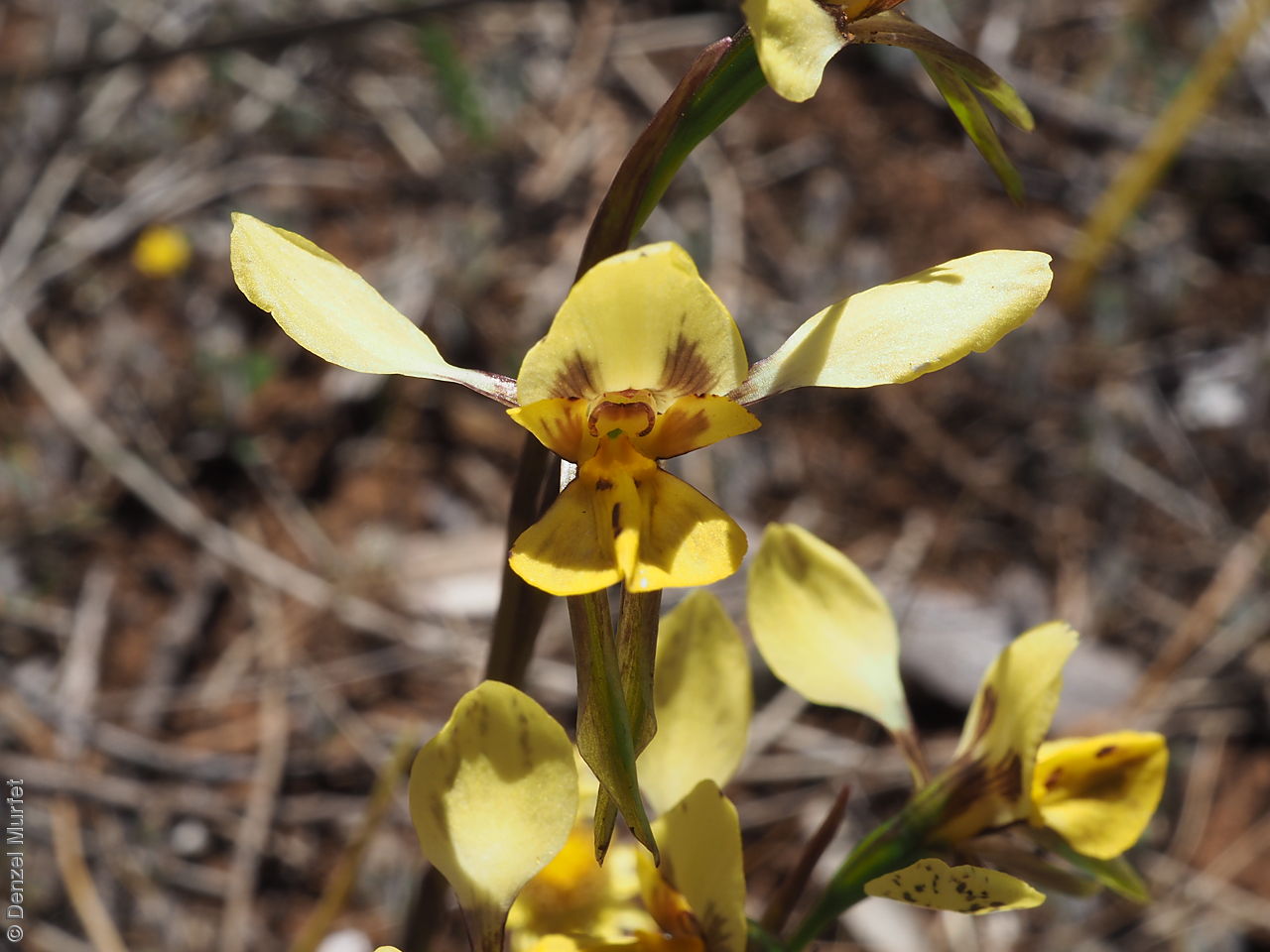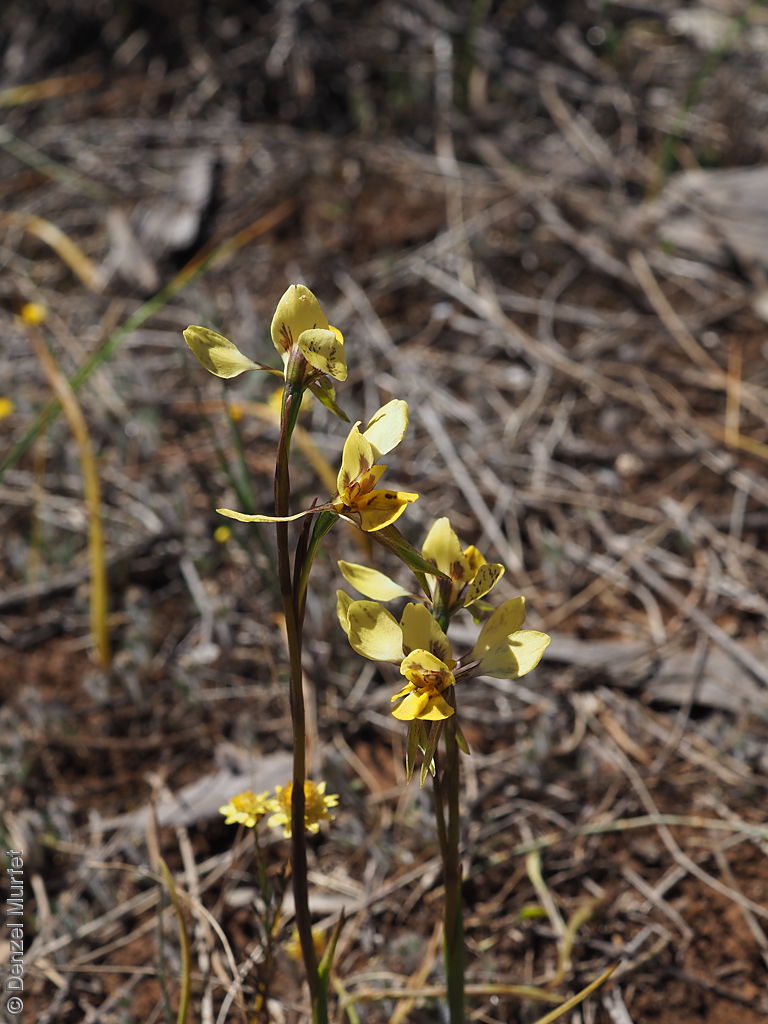










Etymology
Diuris from the Greek 'dis' meaning double and 'oura' meaning a tail, referring to the drooping lateral sepals, resembling tails on some species.
Distribution and status
Found in the Mount Lofty Ranges and the South-east in South Australia growing in open forests, woodlands and grasslands. Also found in Victoria. Native. Rare in South Australia. Rare in Victoria. Possibly a natural hybrid between Diuris behrii and D. pardina or between D. pardina and D. chryseopsis.
Herbarium regions: Northern Lofty, Murray, Southern Lofty, South Eastern, Green Adelaide
NRM regions: Adelaide and Mount Lofty Ranges, Northern and Yorke, South Australian Murray-Darling Basin, South East
AVH map: SA distribution map (external link)
Plant description
Slender terrestrial orchid to 40 cm tall in flower. Leaves two to five; linear, to 15 cm long. Inflorescence one to three yellow,flowers blotched or streaked with brown . Pedicel to 3 cm long, slender, partly enclosed within tapered bract. Dorsal sepal erect to obliquely erect; ovate, to 15 mm long, apex pointed. Lateral sepals deflexed, parallel or sometimes crossed; linear, to 15 mm long, brownish. Petals spreading, to 20 mm long; claw brownish, lamina ovate. Labellum projected forward, to 15 mm long, 3-lobed. Flowering between September and October. Fruits are brown papery ellipsoid capsule.
Seed collection and propagation
Collect seeds between November and December. Collect fat capsules as they start to dry and turn brown. Pods will split and release the seeds quickly and will require monitoring. To increase the chances of collecting mature pods, it is recommended that a small breathable bag (ie. Organza bags) be used to enclose the developing capsules. Place the capsules in a container that will hold fine seeds and leave to dry for a few weeks or until the capsule split. Then carefully hold the capsule and tap it gently to release the seeds. Store the seeds with a desiccant such as dried silica beads or dry rice, in an air tight container in a cool and dry place, refrigerator or in liquid nitrogen.